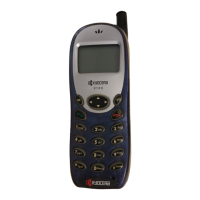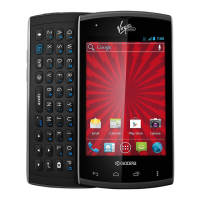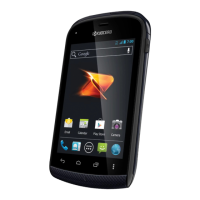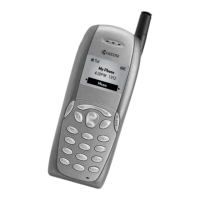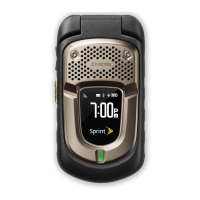User Guide v
Resetting the phone
If the screen seems frozen and the keypad does
not respond to keypresses, reset the phone by
completing the following steps:
1. Remove the battery cover.
2. Remove and replace the battery.
If the problem persists, return the phone to the
dealer for service.
Accessories
Use only Kyocera-approved accessories with
Kyocera phones. Use of any unauthorized
accessories may be dangerous and will invalidate
the phone warranty if said accessories cause
damage or a defect to the phone.
Radio Frequency (RF) energy
Your telephone is a radio transmitter and receiver.
When it is on, it receives and sends out RF energy.
Your service provider’s network controls the power
of the RF signal. This power level can range from
0.006 to 0.6 watts.
In August 1996, the U.S. Federal Communications
Commission (FCC) adopted RF exposure
guidelines with safety levels for hand-held wireless
phones. These guidelines are consistent with the
safety standards previously set by both U.S.
and international standards bodies in the
following reports:
• ANSI C95.1 (American National
Standards Institute, 1992)
• NCRP Report 86 (National Council on
Radiation Protection and
Measurements, 1986)
• ICNIRP (International Commission on
Non-Ionizing Radiation Protection, 1996)
Your phone complies with the standards set by
these reports and the FCC guidelines.
E911 mandates
Where service is available, this handset complies
with the Phase I and Phase II E911 Mandates
issued by the FCC.
Hearing Aid Compatibility (HAC) Features
This Assurance Wireless phone has received a
HAC performance rating (designated by the letter
M followed by a number).
The rating for this phone is identified on the outside
of this phone’s original packaging. While there is
no guarantee, digital wireless phones that receive
a minimum of an M3 rating should provide
acceptable performance with most hearing aids.
Hearing loss and hearing aids are highly
individualized, however, so optimal performance
cannot be guaranteed. Other factors, such as type
of hearing aid device or degree of hearing loss,
also can affect a phone’s performance for a
particular user.
Hearing Aids and Wireless Phones
A hearing aid uses a microphone to collect and
convert sound waves to electrical signals. The
hearing aid then amplifies and converts the
electrical signals back to audible sounds for the
hearing aid user to hear. Radio Frequency (RF)
emissions generated by digital wireless phones
often interfere with the operation of a hearing aid’s
microphone, distorting the amplified audible sound.
In addition, hearing aid microphones tend to collect
ambient noise and amplify these sounds,
interfering with the desired audio transmission.
ANSI Standard
To diminish interference between wireless phones
and hearing aids, the FCC requires wireless
carriers to offer phones that meet the American
National Standards Institute (ANSI) C63.19
standard for reduced RF emissions. Wireless
phones that comply with the FCC’s hearing aid
compatibility (HAC) regulations must receive a
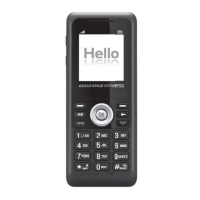
